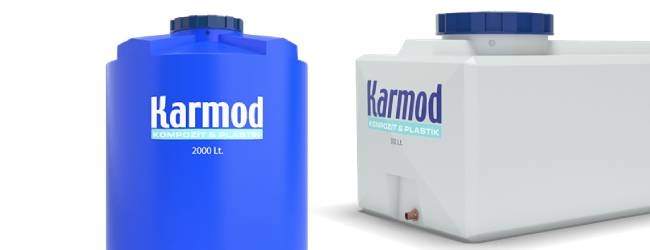
Polyethylene is a thermoplastic that is used in almost every industry. It gets its name from the monomer ethylene. Polyethylene is produced using ethylene and is used in many sectors worldwide, including the construction of water tanks. Statistics show that polyethylene water tanks are the most produced type due to their suitability for storing food. In addition to polyethylene, water tanks are also produced from polyester and stainless steel.
Understanding polyethylene is best achieved by knowing its history and origins. Polyethylene was first discovered chemically in its monomer form in 1930, quite accidentally, at the British chemical products company Imperial Chemical Industries. However, its widespread use began slowly in the early 1970s.
Polyethylene is characterized by easy availability as a raw material and high strength. Since it is easy to source, it is used in almost all manufacturing sectors. Additionally, as an insulating material, it is the most suitable material for covering electrical systems due to its insulating properties. It can also be produced with UV stabilization, which makes it possible for it to be used in the production of water tanks, providing such high durability.
How Are Polyethylene Water Tanks Manufactured?
Today, the manufacturing processes involving polyethylene are generally divided into two categories: high-pressure and low-pressure. Accordingly, polyethylene is produced at high, medium, and low-pressure levels. The diversity in pressure levels is largely due to the emergence of machine power during the industrial revolution.
Polyethylene water tanks are produced to fit a specific mold using resins. Karmod Plastics uses Linear Low-Density Polyethylene (LLDPE) to produce polyethylene water tanks, which is suitable for food contact. This means you can store food in polyethylene water tanks. Additionally, polyethylene has international food-grade certification.
UV stabilizers are used to stabilize plastics, preventing them from deteriorating when exposed to heat, cold, and UV light. This process is carried out by special UV stabilizers. After this treatment, the plastic remains unaffected when exposed to UV light. All these factors contribute to longer-lasting water tanks.
While polyethylene water tanks are produced to fit specific molds, polyester tanks don't have this requirement. If you want to know more about polyester, you can read our article "What Is Polyester?" In our earlier discussion on polyethylene, we mentioned that it can be used in many products worldwide, but not all of them are food-grade. The food-grade polyethylenes are the ones labeled as LLDPE. Polyethylene is considered an environmentally friendly raw material because it is recyclable. That's all we have to say about polyethylene. If you have any more questions about polyethylene water tanks, feel free to consult Karmod Plastics' expert team on any topic.


 EN
EN
 DE
DE
 FR
FR
 IT
IT
 ES
ES
 PT
PT
 RU
RU
 AR
AR
 BG
BG
 SR
SR
 GR
GR
 SQ
SQ
 RO
RO
 PL
PL
 HU
HU
 CZ
CZ
 HR
HR
 AZ
AZ
 GE
GE
 AM
AM
 IL
IL